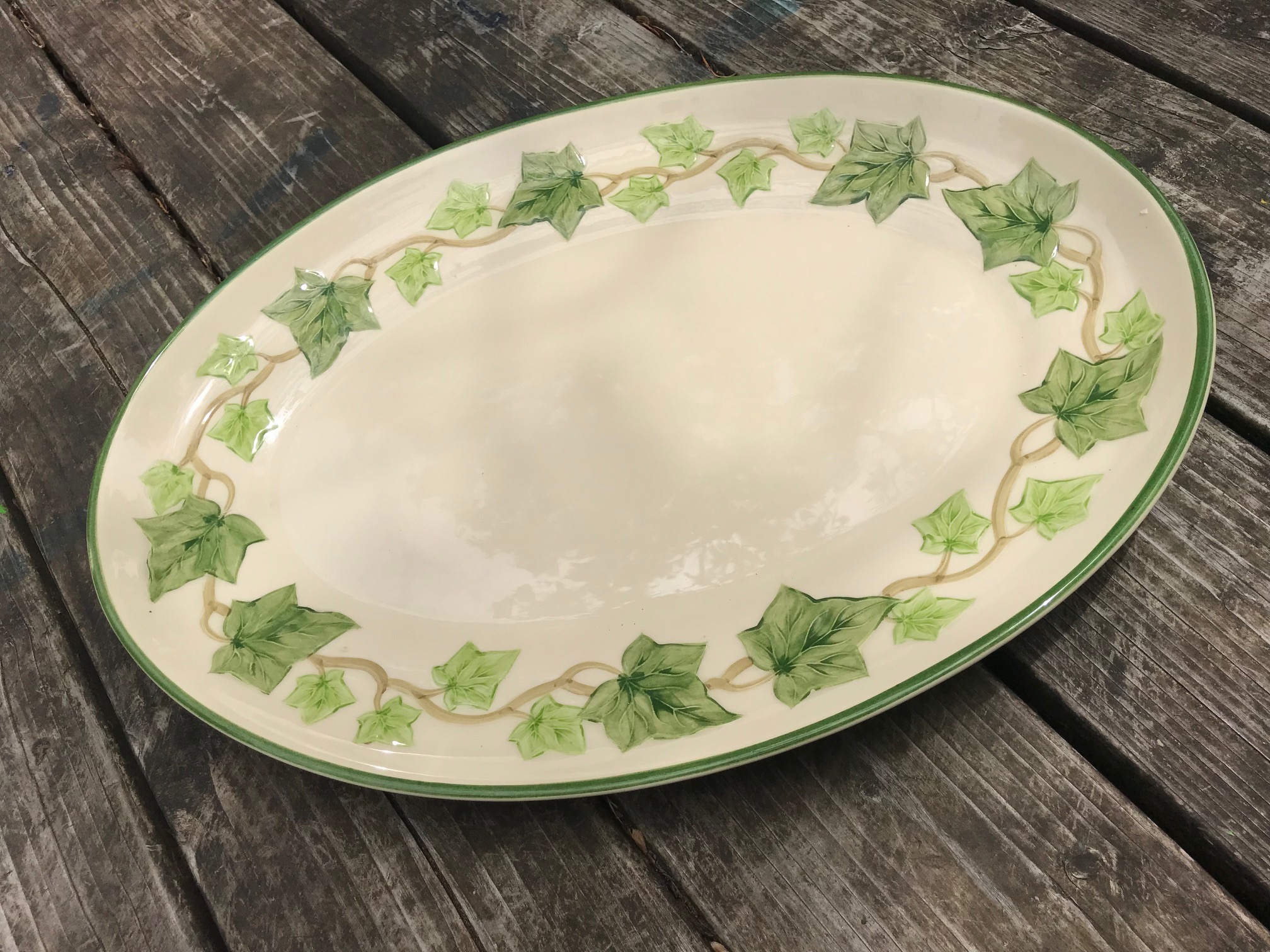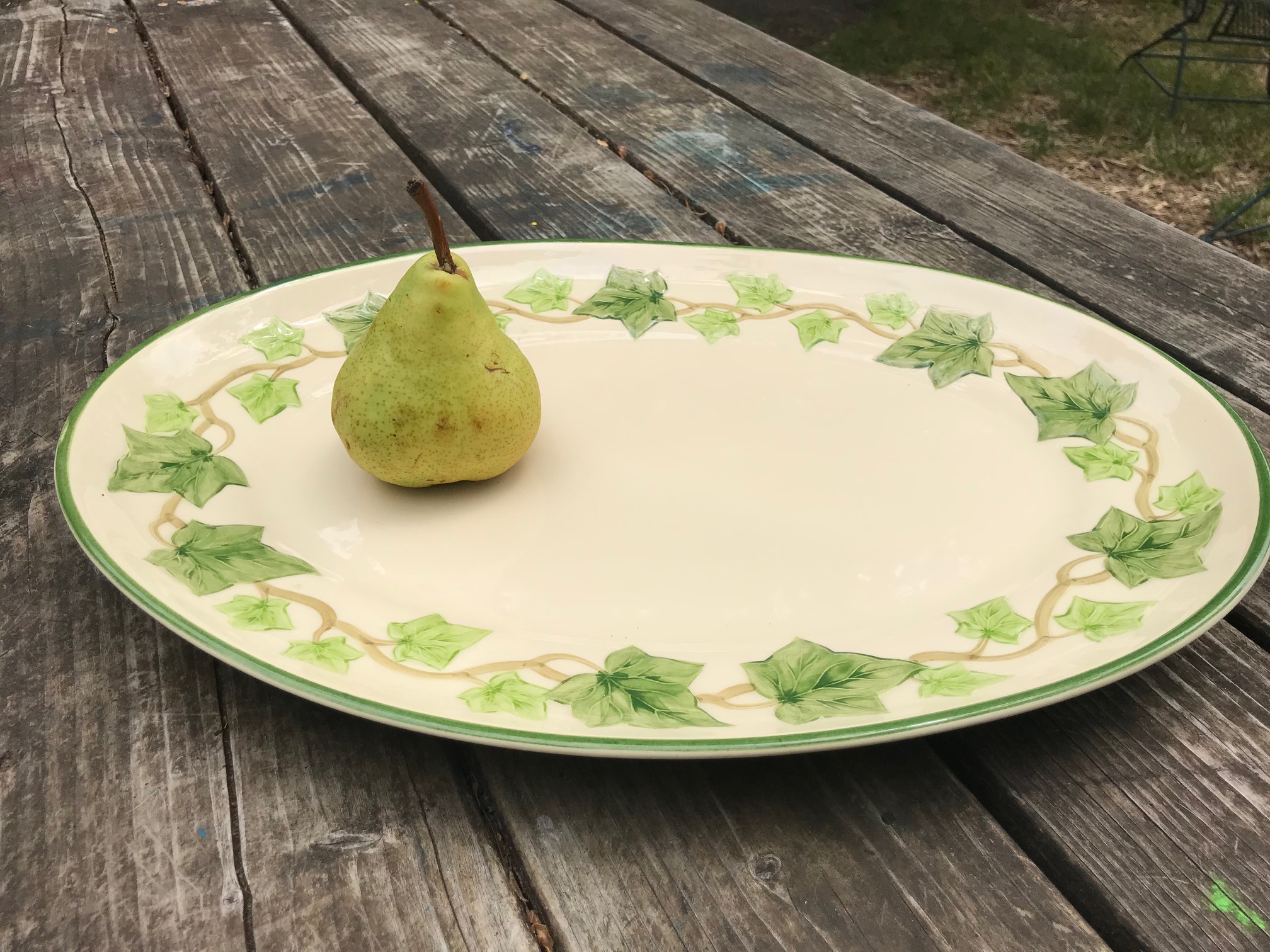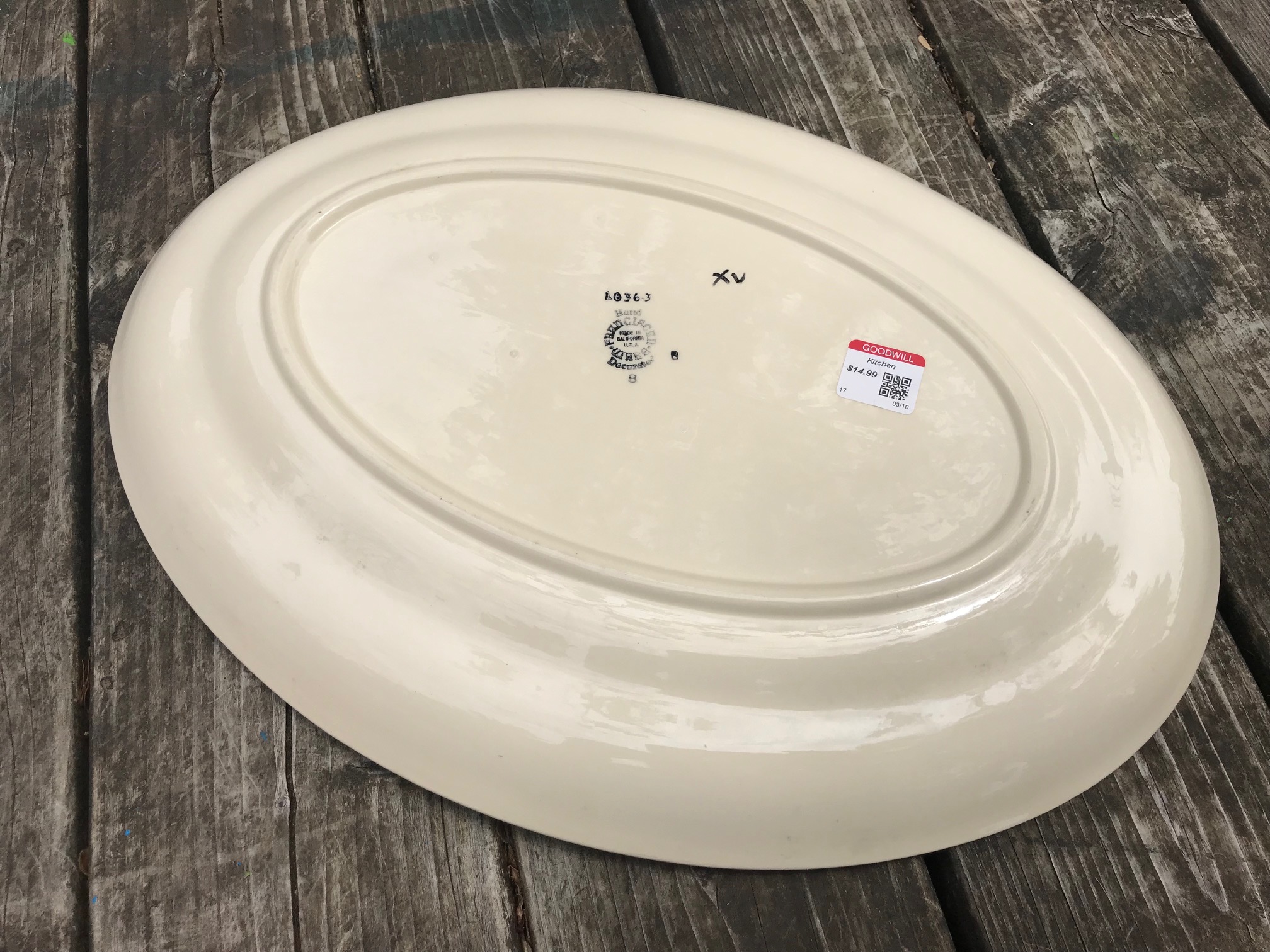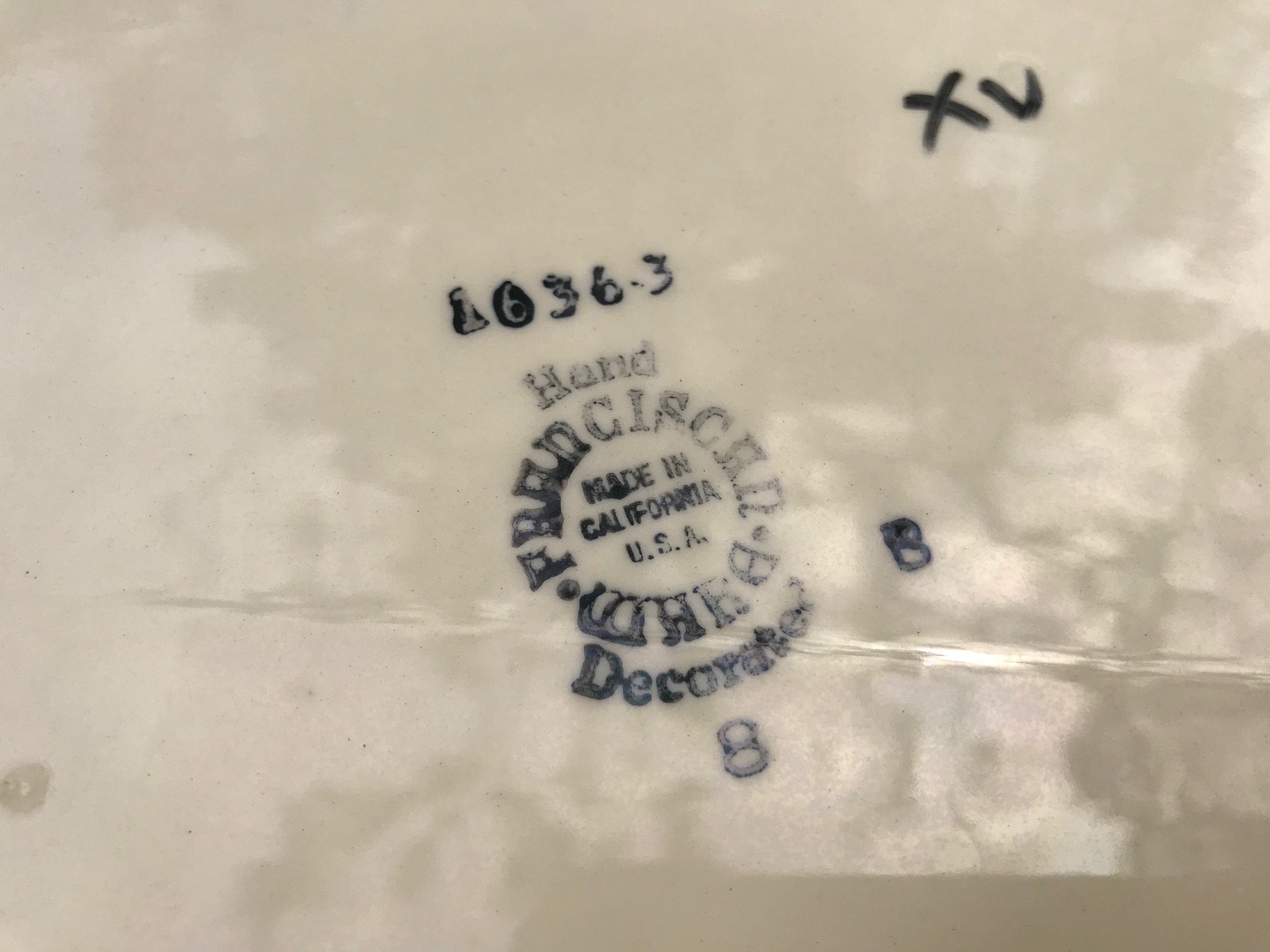Franciscan Ware Potteries (c. 1948) Franciscan Ivy Pattern Serving Tray: 304,000 ppm Lead [90 ppm is unsafe]

The interesting thing about glazes (especially on pieces that are handmade or hand-painted) is that the levels of lead can vary significantly across the surface of one piece. For example in this particular piece I got the following XRF readings on the white surface:
First reading:
- Lead (Pb): 302,000 +/- 26,000 ppm
- Barium (Ba): 3,552 +/ 886 ppm
- Arsenic (As): Non-Detect /Negative
- Cadmium (Cd): Non-Detect /Negative
- Mercury (Hg): Non-Detect /Negative
Second reading:
- Lead (Pb): 189,900 +/- 11,000 ppm
- Barium (Ba): 791 +/- 240 ppm
Third reading:
- Lead (Pb): 304,000 +/- 27,000 ppm
- Barium (Ba): 4,200 +/- 922 ppm
- Antimony (Sb): 633 +/- 242 ppm
This is the reading I got when testing one of the green leaves:
- Lead (Pb): 145,900 +/- 7,100 ppm
- Barium (Ba): 666 +/- 188 ppm
Folks have speculated (in comments on Facebook) that when I report numbers here on my blog (for XRF readings) that I somehow take an average of multiple readings. That is not generally how I work. Most often I take at least two readings and if they are very close (which they almost always are) I report the one that highest lead content. If the two readings are not close I will report a range that I found. I do this work for advocacy purposes (generally in the field) and do not assert that I am in any way a lab or that I am using laboratory standards. That said, my results are generally replicable using other testing methods and other testing instruments.
In a case like this ALL of the readings are bad, PLUS these dishes often test positive with a swab (I’ll be posting a video with this later today), and Franciscan Potteries are at the top of my “No”/”Stay Away At All Costs” list (“Grade F”, when it comes to choices they are at the “NEVER CHOOSE” side of things… the bottom of the list!)
Remember, for context… the amount of lead that is considered toxic in a newly manufactured item intended for use by children is 90 ppm or higher in the glaze/paint/coating or 100 ppm or higher in the substrate. There is no standard currently set as a “safety level” for the amount of lead in dishware as detectable with an XRF instrument.
The pear in the photo below is to show size. It’s a fairly large pear!
If you want to support my independent consumer goods testing and childhood lead poisoning prevention advocacy work, please consider chipping in using this link! Thank you!
Tamara Rubin
#LeadSafeMama
Never Miss an Important Article Again!
Join our Email List






Is it just the Franciscan Desert Rose or Apple also?
Hi Vivienne,
All Franciscan brand china (in all patterns, from all years and all countries of origin) that I have tested have had incredibly high levels of Lead AND the potential for that Lead to be bioavailable (given the age and regular daily use of these products.) The two Franciscan patterns that are most concerning are Franciscan Apple and Franciscan Rose (Desert Rose.) Franciscan Ivy is also quite concerning.
Here’s the link to the “Franciscan” category on my blog. There are quite a few posts in that category. Please scroll through them all!
https://tamararubin.com/category/franciscan/
Tamara
I tested the cream-colored INSIDE of a Franciscan Ivy teacup (made in the USA) with a kit from Amazon. No lead detected. I have not yet tested the green leaves.
Home test kits don’t work for effectively testing most consumer goods. Here’s a link that discusses the testing methodology we use for the testing we do:
https://tamararubin.com/2016/12/ask-tamara-what-do-you-use-to-test-for-lead/
So can I just use my Franciscan Ivy for decorative purposes if there are no chips or cracks? Should I discard any that are chipped?